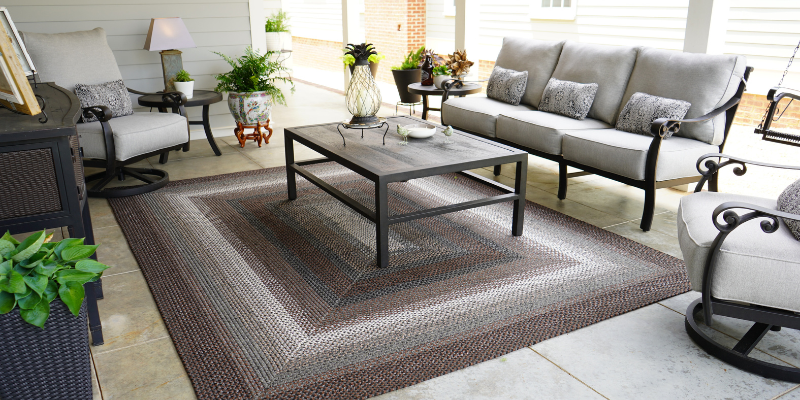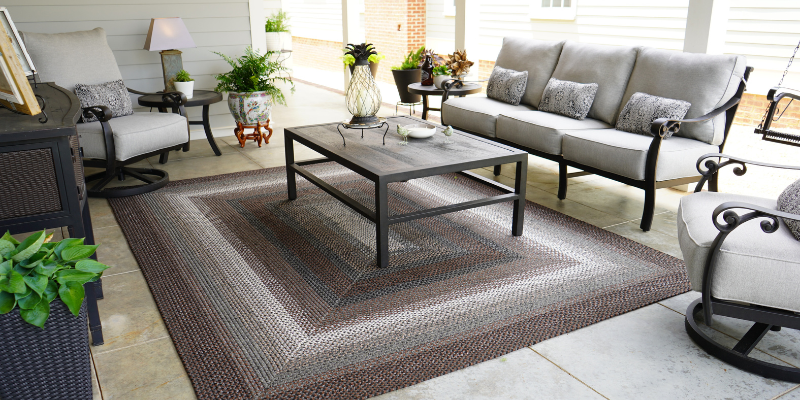Let’s talk about your rugs and furniture! Because let’s face it—without a proper rug setup, even the fanciest sofa can look like it’s floating in an endless sea of hardwood. A good rug arrangement pulls your room together, like finding the perfect song to set the mood at your dinner party. Ready to make it work? Here’s how we can turn your rug from “just there” to “just right.”
1. Rug Size Matters
Understanding how to size your rug is the first consideration. While it might seem advisable to select a less expensive, smaller rug, consider the overall effect it creates. A small area rug can make your room appear cramped, like a peninsula of furniture stranded in open floor space. In this case, opting for a larger rug is often a better solution.
Think of it like this: a big rug lets your furniture relax, spread out, and look like it belongs. For instance, in your living room, aim to have the front legs of your sofa and chairs sitting on the rug—think of it as giving them all VIP seats at the table. For your dining room, make sure the rug extends beyond the chairs, even when they’re pulled out. That way, everyone can enjoy their meal without the distraction of wobbly furniture. For your bedroom, a cozy rug that peeks out on either side of the bed is perfect for chilly mornings.
2. Define Your Zones Like a Pro
By positioning furniture around your rug, you’re essentially drawing invisible boundaries for your spaces. In the living room, a large rug under the seating area signals, “This is the cozy spot.” In the dining room, the rug defines the dining zone (and spares your floor from chair scrapes). In the bedroom, a rug under the bed creates a haven of comfort. Think of each rug as a space-defining tool to add order and charm.
3. All Legs, Front Legs, or No Legs? That Is the Question
How much furniture should be on your rug? The answer depends on your style and space:
- All Legs on Your Rug: Ideal for large spaces, this creates a unified, “floating” effect.
- Front Legs on Your Rug: The perfect compromise for medium-sized rooms, grounding the furniture without overwhelming the room.
- No Legs on Your Rug: If you’re working with a small rug, use it as a visual anchor. Let it act as a subtle stage for your room to revolve around.
Pick the setup that speaks to your style and space, and let your rug bring it all together.
4. Balance, Balance, Balance!
Every element in design, like life, needs balance. In the living room, place a couch on one side of the area rug and balance it with a few armchairs on the other. The dining room is straightforward—a table in the center with chairs surrounding it creates natural symmetry. In the bedroom, center the bed on your rug for a grand, inviting look. Bonus tip: add a bench at the foot of the bed for a luxe hotel vibe!
Balance doesn’t mean everything must match. Mixing sizes, shapes, and textures will make your room feel complete yet comfortably eclectic.
5. Layer Up for Texture and Style
Feeling adventurous? Layering rugs can add depth and personality. Start with a large, neutral base rug, then add a smaller, patterned one for contrast. Think of it as pairing your favorite jeans with a funky belt.
For example, layer a Moroccan-style rug over a jute base in the living room for a bold look. In the bedroom, throw a soft runner over a larger rug. Layering is a playful way to update your room’s look without committing to a complete overhaul.
6. Leave Room to Walk
Think of your rug as a red carpet for your room. It should look stunning but also serve a purpose. Leave about 18 inches of space between the rug and the walls in your living room for a balanced look.
- Dining Room: Ensure the rug extends far enough beyond the table so chairs don’t snag on the edges.
- Bedroom: Make sure there’s enough rug space on each side of the bed for easy movement when you wake up.
7. Play with Shapes
Round, square, or rectangle—the shape of your rug can transform your room’s vibe. A round rug softens a space and works beautifully in nooks or under round tables. Rectangular rugs are classics, adding a sense of length to living and dining areas.
Use the shape to match your furniture layout. Pair a round rug with curved furniture for a cozy feel, or opt for a rectangular rug under a dining set for timeless elegance.
8. Color and Pattern Make All the Difference
Rugs are where your creativity can shine. If your space needs a splash of brightness, a bold rug can do the trick. If your furniture is already bright and bold, a neutral rug provides the perfect balance.
For a cohesive look, pick a rug with colors that complement your existing decor. Or go bold with a striking pattern and let your rug become the room’s centerpiece.
9. Experiment with Angles
While straight placements are classic, don’t shy away from angling your rug if your space has unique quirks. Positioning your rug at an angle can add character and flair, especially in asymmetrical spaces.
Conclusion
When arranging furniture on your rug, consider its size, shape, and proportion to the room. Fully placing furniture on the rug can create a cohesive look, while strategic placement can define zones and create a sense of flow. Pair this with balanced layouts and creative touches like layering, and your rug will transform the room into a well-designed, welcoming space.
This revised version addresses the oddities while retaining the original content. The tone is now smoother, humor is balanced with advice, and instructions are clarified for better flow.














